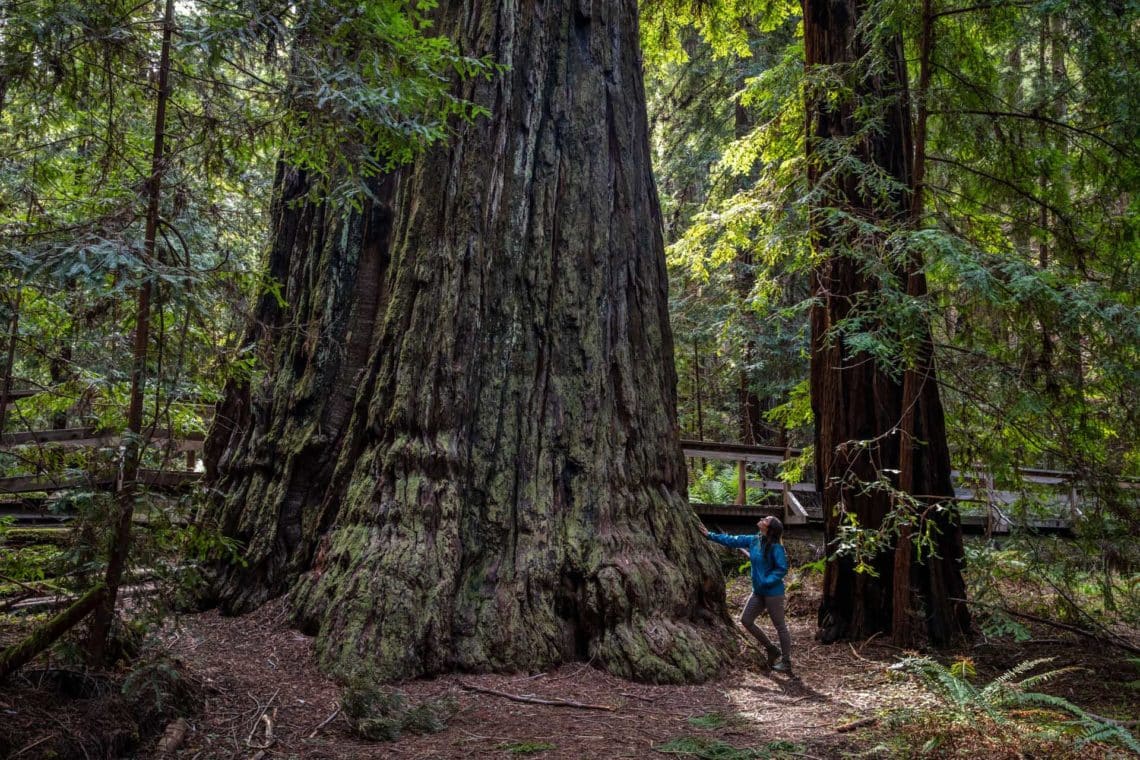What is the League’s history in Montgomery Woods?
An early member of Save the Redwoods League, botanist Ynes Mexia wrote to the League in 1919 in hopes they would protect this place from logging. League Secretary Newton Drury requested an investigation of the area, leading to an end to tree cutting by 1920. The reserve was established in 1945. Since 1947, the League completed numerous transactions to expand Montgomery Woods State Natural Reserve from an initial 9-acre donation to 2,743 acres. Since 2008, the League has partnered with California State Parks to develop park infrastructure including trails, parking, a picnic area, interpretation, and a restroom.
Why does Montgomery Woods need improvement?
This project is a top priority for California State Parks to ensure protection of the old-growth redwood trees and fisheries, restore impacted sensitive areas in the grove, and make the park more welcoming and accessible for visitors. A re-routed trail will ensure year-round access to the grove, and a redesigned and expanded picnic area will provide better amenities for visitors.
What improvements are being made?
The first phase of the project will reconstruct and expand the 2-mile perimeter loop to protect redwood roots and watercourse crossings. The second phase will create an immersive grove path to bring visitors onto the valley floor, including gathering areas, a bridge overlooking Montgomery Creek, modern and inclusive interpretive exhibits, and restoration of extensive social trails.
When will the project be completed? Will the reserve remain open in the meantime?
The work is expected to be completed in stages through 2025. The reserve will remain open for day use, but with some detours, limited parking, and potentially occasional temporary closing when heavy equipment is in use.
